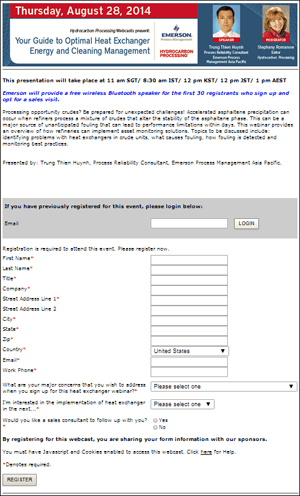Update: A recorded version of this one-hour webinar is now available.
Original post: According to IHS, a global information and analytics provider for energy, economics, geopolitical risk, sustainability and supply chain management:
Estimates have been made of fouling costs due primarily to wasted energy through excess fuel burn that are as high as 0.25 per cent of the gross national product (GNP) of the industrialised countries.
Heat exchanger fouling can result in increased energy costs by increasing the demand for make-up heat. It also can cause crude unit under-utilization when the fired heater reaches its maximum heat capacity and forces a reduction in throughput or a shutdown for cleaning.
There are several causes of fouling. For a refinery’s crude unit, the biggest cause is asphaltene precipitation, but can also include paraffinic accumulation, filterable solids accumulation, and corrosion.
For process automation and instrumentation professional in the Asia-Pacific region, Hydrocarbon Processing magazine editor Stephany Romanow and Emerson’s Trung Thien Huynh, a Process Reliability Consultant, will be hosting a webinar, Your Guide to Optimal Heat Exchanger Energy and Cleaning Management, on Thursday, August 28 at 11 am SGT / 8:30 am IST / 12 pm KST / 12 pm JST / 1 pm AEST / 3 am UTC.If you’re in other parts of the world and are interested in joining the webinar, you can find the local time of the event here.
This webinar provides an overview of how refineries can implement asset monitoring solutions. Topics to be discussed include:
- Identifying problems with heat exchangers in crude units
- What causes fouling
- How fouling is detected
- Monitoring best practices
With changes in the global crude oil supply from non-traditional sources such as shale oil, the different blends often cause unpredictable fouling rates.
Stephany and Trung will discuss how measurements can be added to provide early detection of fouling conditions to avoid the costs of increased energy usage and potential downtime.
They will share a case study and the results achieved through the application of additional measurements and monitoring as well as a demonstration of the technologies.
Register today for the webinar and bring your application questions. You can also learn more about monitoring your plant equipment on the Essential Asset Monitoring web pages.
Connect and interact with other refining professionals in the Refining track of the Emerson Exchange 365 community.

